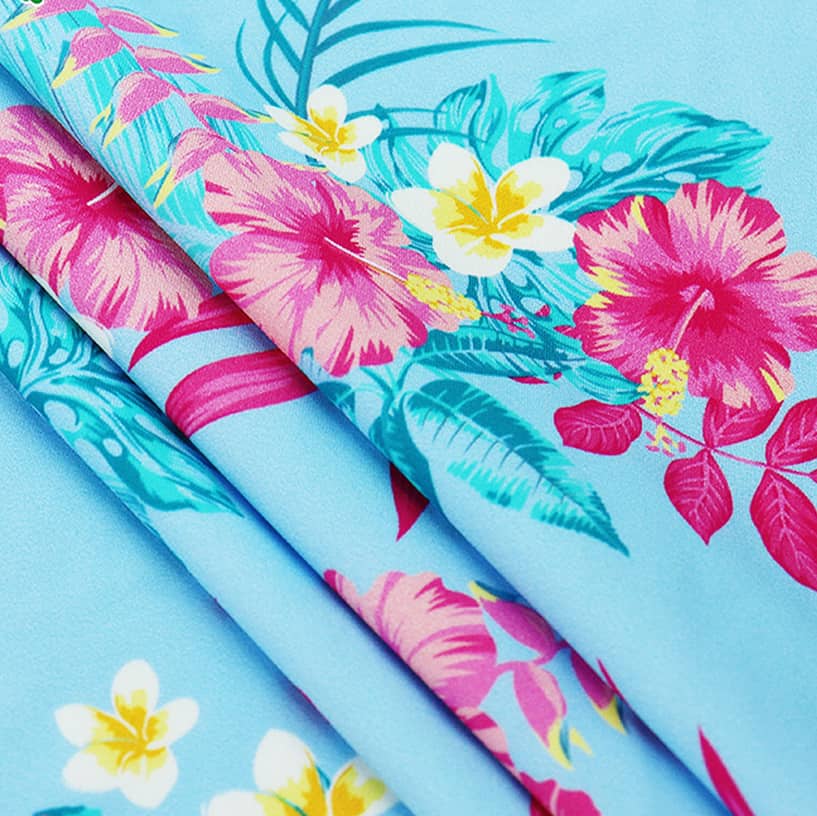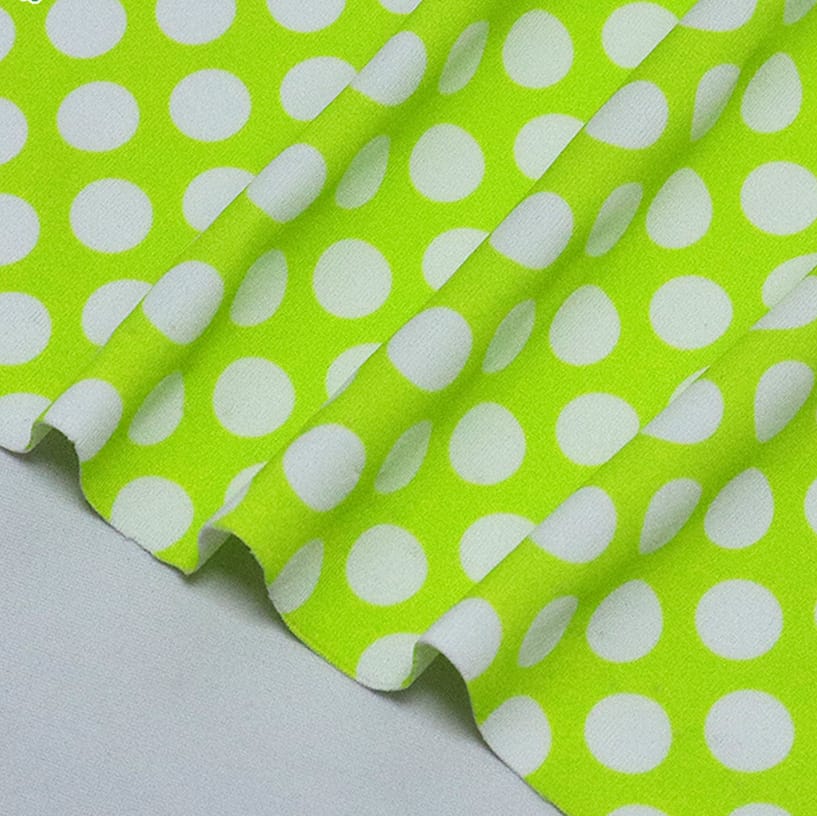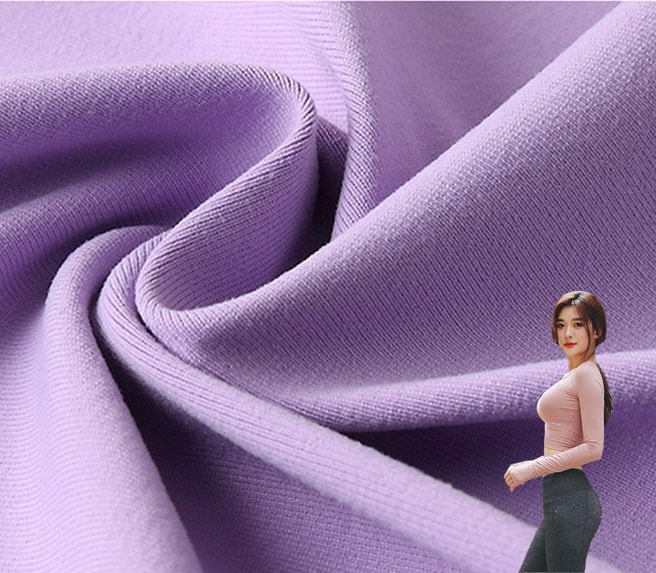Causes during the production process
Knitted fabrics in the printing and dyeing production as well as the weaving production process, the following situations will inevitably exist.
1 hot and humid environments for the printing and dyeing process.
2 Efforts have been made to create conditions in the knitted fabric printing and dyeing production process so that knitted fabrics are carried out under less tension and without tension, however it has so far been impossible to completely avoid tension in the knitted fabric processing and production process. The presence of tension makes the fabric longitudinally stretched, the fabric density is reduced, the fabric deformation.
3 knitted fabrics are dried away from a stable state
4 knitted fabric yarn processing, knitting processing process also exists latent tension.

Problems caused by shrinkage of knitted fabrics
1, because the dyeing and finishing process is in the hot and humid state, water molecules into the amorphous area of the fiber, so that the molecular chain between the force is reduced. At this time, under the action of external forces, the molecular chain segments produce displacement, so that the fibre elongation. If dried in this elongated state, hydrogen bonds are formed in new positions between the fibre molecular chains and the elongated part of the fibre fails to shrink back to its original state. The stability of the deformation in this hot and humid state is unstable.
2, knitted fabrics are made of coils in series with each other, which has a most stable structural form. If the knitted fabric is in a stable structural state, it is in a dimensionally stable state and does not shrink when exposed to water. However, in the actual production process, the fabric, especially the fabric longitudinal by the larger repeated stretching effect, resulting in yarn fibres produce plastic deformation, fabric longitudinal elongation, width narrowing, coil transfer, fabric structure away from the fabric stable state. This state is unstable, under the appropriate conditions, there is a return to the original stable state of tendency.
3, knitted fabric drying in elongated condition, the surface seems to be stable, but in fact this “stable” is temporary.
4, knitted fabric yarn processing, fabric knitting process by the draft, the impact of tension has latent tension, the same will cause the yarn fiber retraction.

The main causes of knitted fabric shrinkage
1, the return of fibre deformation in the wet and hot state. Cotton knitted fabrics in a relaxed state of washing, water molecules can put the newly generated hydrogen bond destruction, so that the internal stress relaxation, elongation part of the retraction that produced shrinkage.
2, knitted fabric deformation of the reply. Knitted fabric structure in the case of away from the fabric stability state, in the wetting and washing, fiber plasticity enhanced, recovery force has strengthened the return of deformation, elongation retraction, cotton knitted fabric shrinkage and return to the original stable state, which is the main cause of cotton knitted fabric shrinkage.
3, fiber moisture absorption, yarn diameter increases, resulting in yarn shrinkage, resulting in shrinkage. Increased yarn diameter causes the length of the yarn to shorten, resulting in fabric shrinkage (including length and width) and increased density.
The above mentioned are the basic causes of shrinkage in knitted fabrics. As for the knitted fabric in different circumstances, the impact of shrinkage factors and shrinkage situation, for example: different fiber composition knitted fabric, different tissue structure of knitted fabric, different dyeing and finishing process and equipment, whether the fabric after mercerization, stretch shaping, pre-shrinkage treatment, etc., still need to practice, exploration, summary, perfect and improve.

Knitted fabric printing shrinkage control measures
1 Loose processing minimises the tension in each process in the printing and dyeing production process. Try to avoid plastic deformation of the fabric in the wet state, to avoid fabric and fibre elongation, which is the most ideal way to prevent fabric shrinkage. In fact, printing enterprises in the knitted fabric and other dyeing and finishing processing has taken a lot of loose processing methods, knitted fabric printing and pre-treatment, finishing equipment selection are considered loose processing, take many effective loose processing of good methods. I believe that with the development of knitted printing and knitted printing equipment, knitted fabric loose processing will continue to improve and improve. In addition, in the shortening of the printing process is also in the production of attention and put into practice. The use of the above measures, will certainly reduce the knitted fabric in the wet state of plastic deformation, to avoid fabric and fiber elongation, reduce the fabric shrinkage is very good.
2 overfeed drying is also to achieve relaxed drying, reduce the role of tension, so that the fabric tends to be close to the full equilibrium state. In the knitted fabric printing before, overfeed drying can be combined with pre-press stenter shaping process, timely mastering overfeed and will fabric drying, in order to achieve the purpose of reducing the fabric shrinkage rate.
3 mechanical pre-shrinkage is the use of special mechanical pre-shrinkage equipment on. First, overfeed into the cloth, so that the fabric longitudinal in a relaxed state, there is room for pre-shrinkage, and then to the fabric steam to wet strengthen the fabric in a relaxed state of plasticity, so that the internal stress of the fabric relaxation, and then through diffusion so that the fabric longitudinal contraction, transverse expansion, or longitudinal extrusion, so that the fabric in the weaving or dyeing and finishing processing of the longitudinal elongation part of the forced retraction, so that the fabric has a relaxed structure, and in this state of loose type Drying to achieve the effect and purpose of pre-shrinking. Mechanical pre-shrinkage is one of the effective measures to overcome the large shrinkage rate of knitted fabrics.

Other measures to reduce the shrinkage of fabrics
1 in the refining and bleaching process to complete the amount of tension reduction.
2 in the dyeing and finishing process where the wet cloth drying is complete amount of tension, reduce elongation to avoid excessive narrow shrinkage of the door width, if it is open width even baking machine in the open width to add a small capacity box and then wear into the cloth frame to avoid the tension between the open width and rolling water is too large;.
3 in the mercerization process to grasp the expansion tension to maintain the effective width of the native cotton cloth carefully manipulate the weft tension.
4 each process of flat washing machine guide stick, rolling stick, drying cylinder, should strengthen the maintenance to ensure that the flat and clean, to avoid tension relaxation wrinkle water tank in the guide roller to run freely, the same machine before and after the roller drying cylinder line speed difference should not be too large, the warp tension grasp cloth does not drag the ground shall prevail, in the long table of the segmentation process should be loosely adjusted to open and lower the frame device or segmentation drive adjustment device to manipulate the size of tension;.
5 mercerization after the product should be strictly manipulated, after the process of processing tension because of mercerization and then elongation, warp shrinkage in the actual production operation can be developed in each process in the effective width of the semi-product indicators, in each machine to go to the cloth in order to measure the assessment, after the sequence to the former process of acceptance, to ensure that the effective width of the semi-product should be;.
6 for some machinery, tension requires manual manipulation of tension, strict process operation, strengthen process operation, strengthen mechanical cleaning, reduce running tension, effectively reduce the shrinkage rate of the fabric.
7 strengthen the inspection of the mercerizing process conditions, the dyeing factory with conditions can use straight rollers and cloth tongs combined with mercerizing.
8 the warp shrinkage rate of varieties: such as khaki, waffle poplin fabric to be pre-shrinkage treatment. Reduce shrinkage, in these varieties in tight processing, only rely on mechanical relaxation tension, then a good shrinkage rate is also up to about 4%, this shrinkage rate is appropriate to adopt the method of pre-shrinkage to further reduce, the product after pre-shrinkage treatment not only shrinkage rate is reduced, but also to obtain a better feel, clear grain luster light soft.
9 for the weft shrinkage of larger varieties, some due to the effective width of this colour cotton unreasonable, even if reasonable processing conditions, there is still a larger weft shrinkage, processing conditions of poor shrinkage is greater, must take further improvement measures, mercerized varieties to ensure that the effective width of the cloth to meet the requirements. In addition, the need to improve the specifications of the cotton fabric in this colour, without adding cost or less cost conditions, the effective width of the cotton fabric in this colour will be relaxed to ensure that the weft shrinkage down to the required range.
10 Resin finishing can reduce shrinkage and improve elasticity (with care to the hand) and PU coating can also reduce shrinkage.
11 for T / C blended chemical fiber fabric, to grasp the fixed line mercerization process and operation can be better manipulation of shrinkage.
























